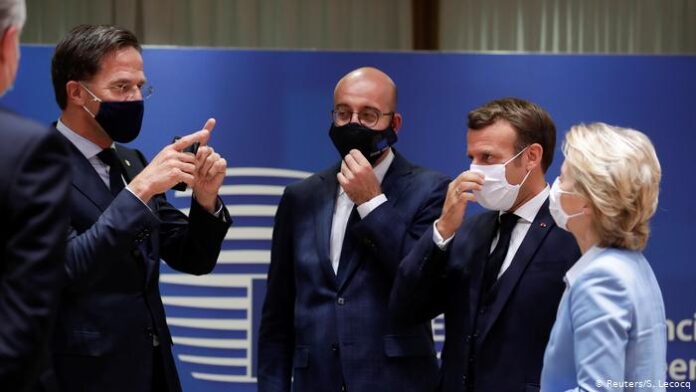EU leaders went the distance to agree a historic coronavirus recovery fund for the bloc. But doling out €750 billion in grants and loans will be a tricky task. Paying it back will be even harder.
It was the longest EU summit in almost 20 years. So when EU Council President Charles Michel tweeted the single word “Deal!” at 5.31am on Tuesday morning, there was both relief and intrigue at precisely what agreement had finally broken the deadlock.
Those who remember the constant stream of “make-or-break” EU summits during the eurozone crisis of 2009-2012 might scoff at the idea of anything “historic” being struck at one of these gatherings. But this deal is genuinely a matter of historic significance. For the first time ever, the EU has committed to a form of debt union.
First though, the standard part: the EU has agreed its latest seven-year budget (officially known as the multiannual financial framework), which is worth a bulky €1.074 trillion ($1.23 trillion). The historic part is the separate €750 billion post-pandemic recovery fund, €390 billion of which will be delivered to EU countries in the form of grants and €360 billion in loans.
France, Germany and the EU Commission wanted the €390 billion part to be €500 billion, but even if that has been watered down, it is still the first time ever that the EU has provided grant aid on such a scale, which crucially will be borrowed on markets collectively.
A pot of grant gold
The €390 billion pot of grant aid is an important element of the agreement. That money will come from the €750 billion fund, known officially as ‘Next Generation EU’. The European Commission will borrow all that money, issuing bonds with maturities of three to 30 years. The plan is to start repaying the money from 2027 on, with the tab to be settled by 2058.
Sealed with an elbow: European Council President Charles Michel and European Commission President Ursula Von Der Leyen after a marathon summit.
Of that €390 billion, around €312.5 billion (80%) will be allocated to the so-called EU Recovery and Resilience Facility. Member states will access their share of the €312.5 billion from 2021 to 2023. The rest of the €390 billion grant fund — €77.5 billion — will be added to existing EU budgetary programs which offer grant aid.
This €312.5 billion figure is the most important part of the whole deal. In order to access the grant aid, which will not have to be paid back, member states must prepare national recovery plans making certain pledges.
What are those pledges? A European Council statement after the meeting shed some light: “In line with the principles of good governance, member states will prepare national recovery and resilience plans for 2021-2023.
“These will need to be consistent with the country-specific recommendations and contribute to green and digital transitions. More specifically, the plans are required to boost growth and jobs and reinforce the ‘economic and social resilience’ of EU countries.”
In other words, countries must make plans with digital and green economy reforms. Other reforms relating to issues such as labor rights and pensions, depending on the country, will also be required.
Watch

